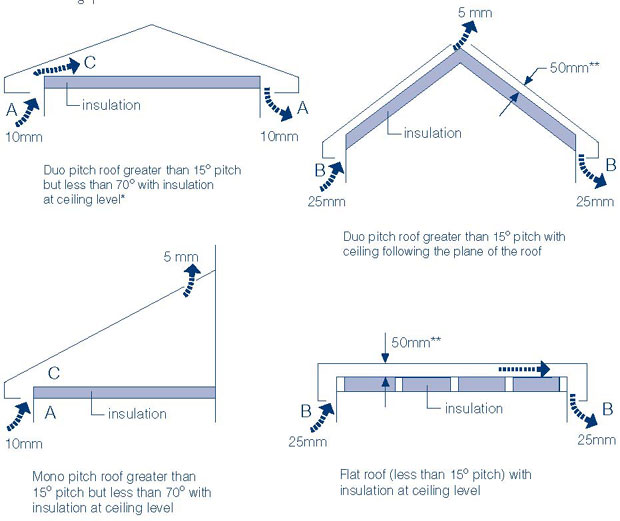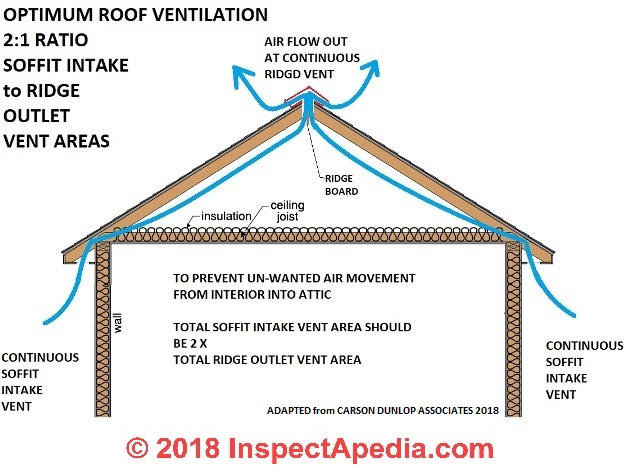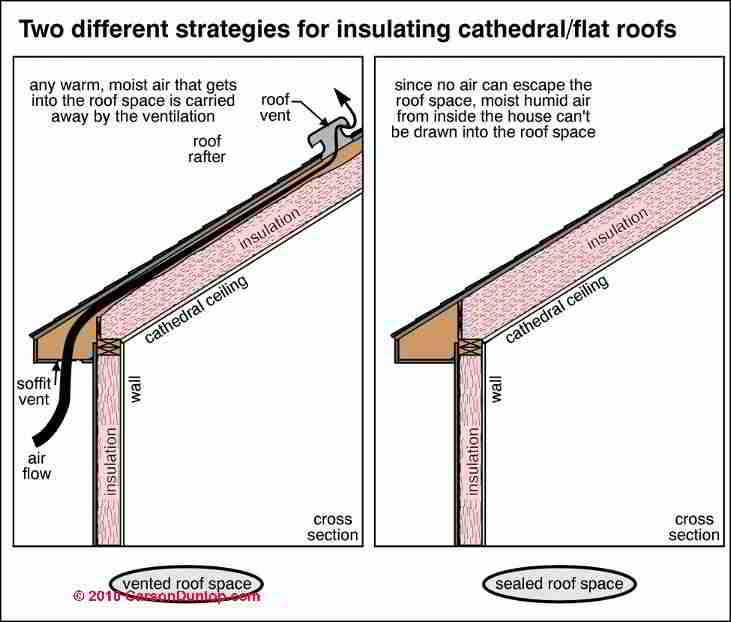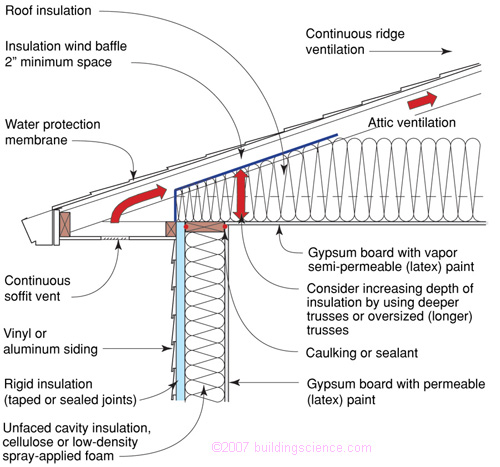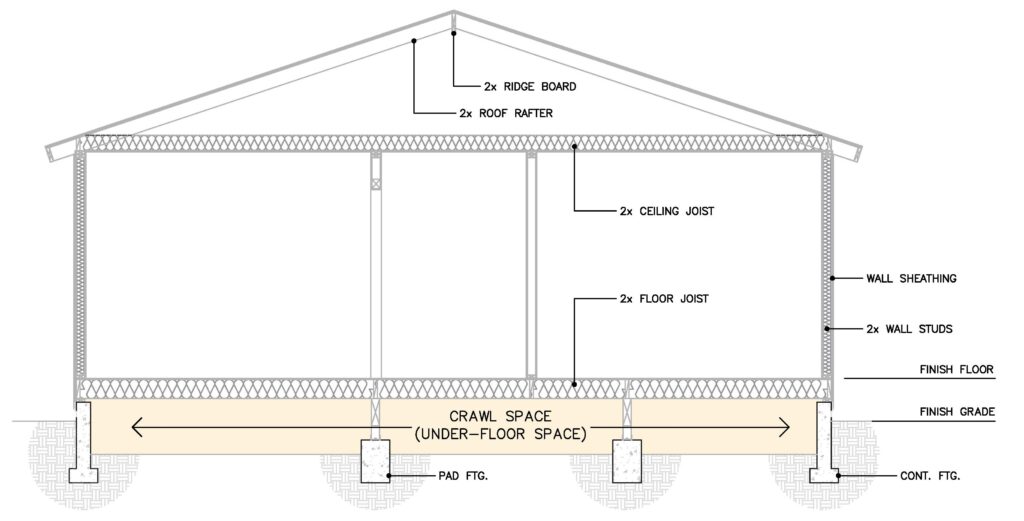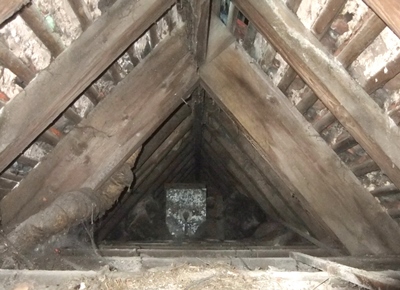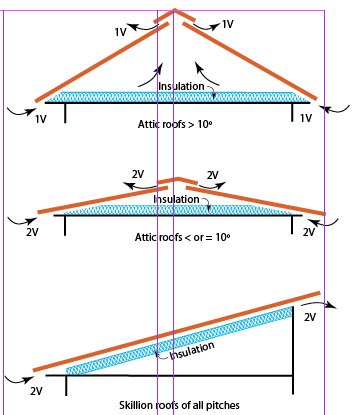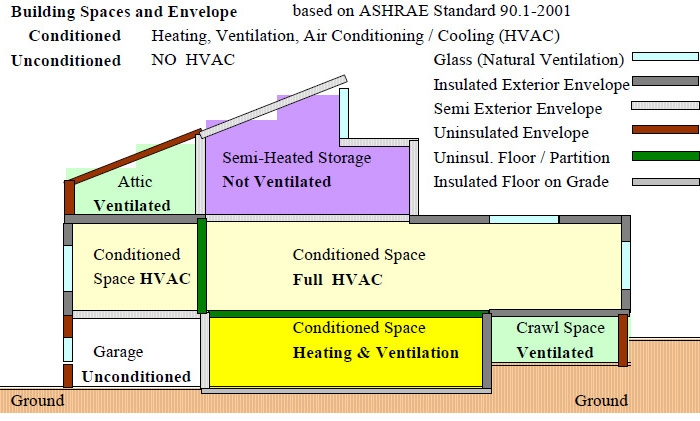The recommended ventilation ratio to provide for vented attic assemblies when an air barrier is present is the 1 300 ratio as specified by most building codes.
Roof space ventilation building regulations.
Attics must have a minimum of 1 square foot of ventilation openings for every 150 square feet of floor space.
For example in the average house with a cold loft there should be a minimum of a 7mm continuous ventilation gap at eaves when using a vapour permeable underlay with a normal unsealed ceiling.
The roof space isn t intended to be a storage area so if you do put items up there you.
A roof void above an insulated ceiling.
Roofs with a pitch of 15 or more.
Condensation encourages rot and mould growth.
The air gap dimensions shown on the drawings are the minimum widths required for clear continuous ventilation air paths at the eaves.
Around 25 per cent of heat loss occurs through a building s roof but high levels of insulation in historic roofs can be counter productive sometimes even accelerating heat loss in the long term.
Contribute positively to moisture control in dwellings tending to be short of ventilation.
1 300 ventilation ratio recommended.
Roof voids must be ventilated in order to stop warm air condensing on cold surfaces.
Both building regulations and nhbc require ventilation to be provided in roof spaces.
Otherwise ventilation is required and this is known as a cold roof system.
Therefore it s important that the ventilation slots aren t blocked.
Ventilation is not required to a warm roof system which is where the insulation is placed above the joists or rafters.
When ventilating a roof the air should be able to enter at one end and travel through to the other end where it can exit.
Duo pitch roofs greater than 200 pitch or greater than 10m span should have additional ventilation at the ridge to assist airflow through the roof void equivalent to at least a 3 mm wide continuous gap.
Isbn 978 1 85946 679 7 pdf 683kb this file may not be suitable for users of assistive technology.
Roof insulation thermal resistance at roof perimeter should be equal or greater to thermal resistance of exterior wall.
Minimum requirements bs 5250 sets out the minimum requirements for roof space ventilation.
Jonathan taylor s article unpacks the key issues including the role of moisture ventilation and buffering.
If the attic is equipped with high and low ventilation openings the requirement is 1.
In many pitched roofs a ventilation slot is built in along two opposite eaves so that air can flow across the roof space.
Pitched roof spaces should have ventilation openings at eaves level to promote cross ventilation.
Cold roofs versus warm roofs.
Roof space air quality 9 1 roof spaces with dampness problems such as from leaking roofs lid less water tanks moisture being vented into the roof space and moisture rising from the ground through building cavities require special attention.

